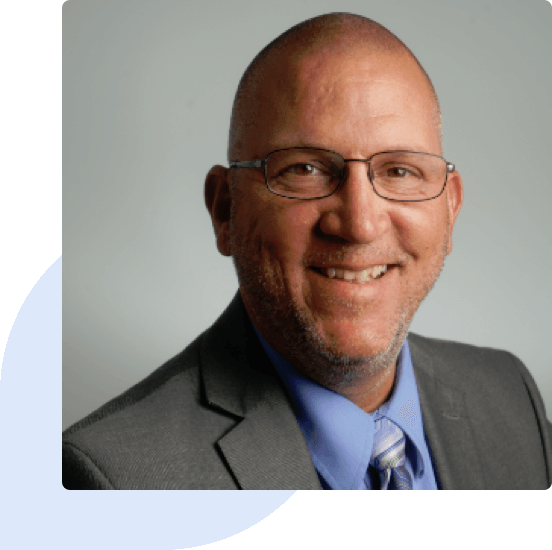Improving Technology Adoption Among Seniors in the Home Healthcare Space

As home healthcare becomes more prevalent, older patients and providers must learn how to use new software and devices.
Although seniors are often slower to adopt technology than their younger counterparts, many are still eager to embrace new tools and platforms. When asked in 2019 why he and others in his age group would want to learn how to use the internet, one senior told TechCrunch, “We feel like we’re standing outside a building that we have no access to.”
While the COVID-19 pandemic has certainly served as a springboard for technology adoption among many seniors, hundreds of thousands remain unable to reap the benefits of the digital era — including benefits that relate to healthcare.
According to research from GoHealth, 31% of Medicare beneficiaries aren’t interested in virtual healthcare visits. Of this group, 74% say their doctor has never mentioned virtual visits, 32% say they don’t have access to a laptop or mobile phone, and 65% say they don’t know how to use video conferencing platforms.
But senior patients aren’t the only ones getting left behind. Americans are continuing to work later and later in life, and many of them are working within the healthcare field. According to the U.S. Bureau of Labor Statistics, the labor force participation rate for individuals 55 to 64 years old and 65 to 74 years old is expected to reach 66.6% and 30.2%, respectively. Within home healthcare specifically, the average age of a home health aide is 45 and, as of 2019, nearly 14,000 home health aides were 60 years old.
With remote and onsite healthcare expected to remain an integral part of our healthcare system, equipping all seniors with the skills and devices they need to access — and provide — home healthcare onsite and in remote settings has become more important than ever.
Providing Seniors With the Right Digital Tools
Without access to a mobile phone, tablet, or laptop, virtual visits with physicians become virtually impossible. But even seniors with a digital device face challenges accessing telehealth appointments if they don’t have a strong internet connection. According to one recent report, an estimated 22 million seniors in the United States lack broadband access at home.
To help close this digital divide, many city officials and nonprofit organizations are stepping up to the plate. When Beverly Black, a senior living in New York City, found herself without a computer during the pandemic, the AARP-affiliated charity Older Adults Technology Service (OATS) intervened.
According to AARP, “Within weeks, Black had a new LG Android tablet, among 10,000 devices provided to those age 60 and older in the city, along with T-Mobile connectivity for two years…all free.”
But mobile devices and computers aren’t the only tools seniors need in remote care settings. Remote Patient Monitoring (RPM) solutions like heart monitors and Bluetooth-enabled scales provide healthcare professionals with critical patient data that can improve health outcomes and lead to significant cost savings for healthcare institutions.
To ensure senior patients and home healthcare providers receive the high-functioning devices they need to use home healthcare tools successfully, meticulous device provisioning is key. A rigorous device provisioning process will allow you to:
- Foster a better customer experience by ensuring devices are delivered on time and ready-to-go
- Maintain a robust inventory of devices that can be kitted and shipped at a moment’s notice
- Offer multilingual support via device training guides that have been translated into a senior’s preferred language
Improving Technology Adoption Rates Among Seniors
As organizations ramp up the distribution of devices and seek to get seniors online, device and software training programs have become essential. While these programs take many forms, they all share the same goal: to help those who didn’t grow up in a digital world feel connected.
To succeed, software and device training must focus on breaking tasks down into small, explicit steps. For example, a qualified telehealth trainer will emphasize the color and exact location of a button that must be pressed, describe where they need to click on the screen, how long they need to wait between steps, etc.
When possible, virtual, on-demand training sessions can be particularly helpful. These sessions walk seniors through the entire device implementation process from start to finish to increase technology adoption and thus minimize the number of customer support requests a healthcare organization receives.
Providing this level of detailed, personalized training and support early — whether remotely or in person — allows organizations to:
- Improve the customer experience and boost satisfaction ratings
- Reduce ongoing support costs
- Improve employee productivity by allowing staff to spend more time on their day-to-day responsibilities and less time managing customer questions and concerns
But even those seniors who have attended the most robust training sessions will have questions as they begin using digital tools in the home healthcare setting. To ensure these end users have a positive customer experience, they need access to a number they can call at a moment’s notice. Organizations that fail to provide this level of support will soon find themselves with a diminishing customer base, poor reputation, and disgruntled staff.
Helping Customers Adopt Technology With Confidence
Learning how to use new devices can be challenging for even the most tech-savvy individual, leading to frustration and slow adoption rates. At Epiphany, we provide users of all ages with real-time support via a US-based live agent ready to help them retrieve forgotten passwords, access online portals, deploy at-home monitoring solutions, and more. Our agents are trained to exceed your quality standards, deliver world-class service, and represent your brand with confidence.
As part of our comprehensive support solutions, we also handle all device logistics and training. From device procurement and provisioning to robust on-site and remote training, we’re here to ensure your users are empowered with the high-performing tools they need — 24 hours a day, seven days a week.




